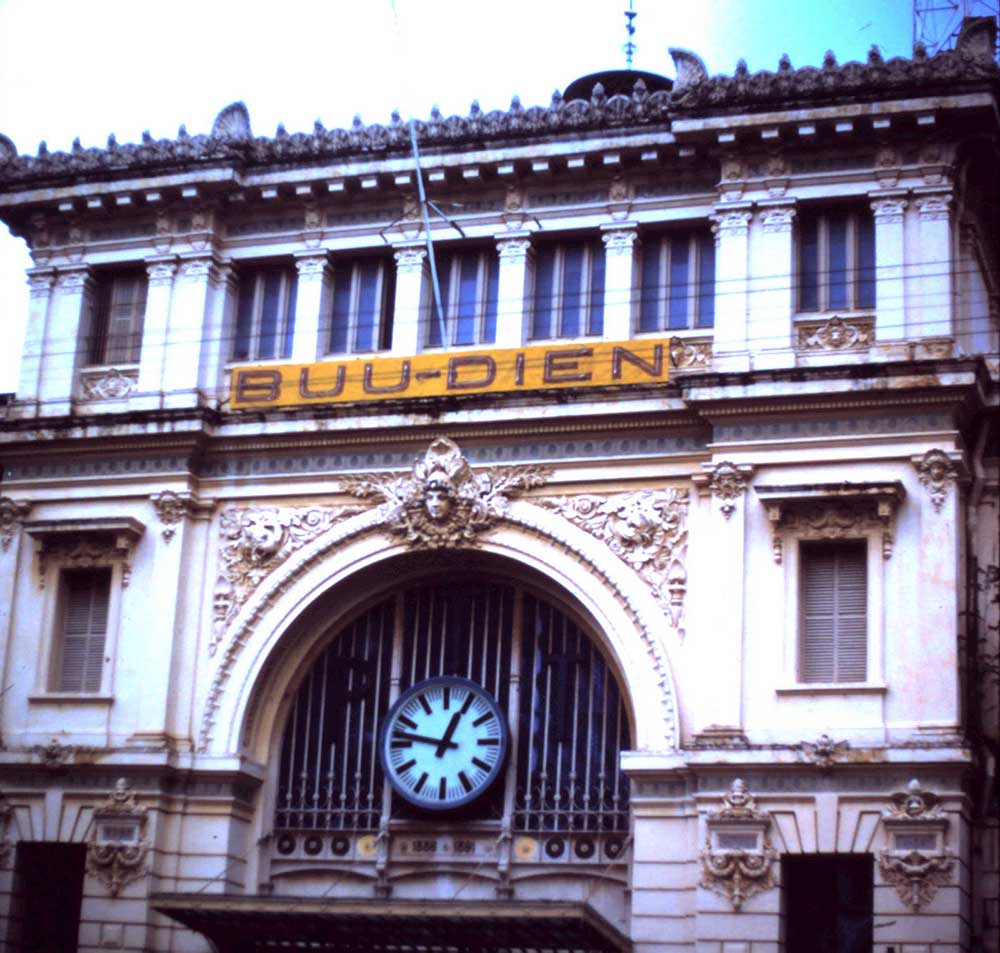Located in the heart of Ho Chi Minh City, the Saigon Central Post Office is a familiar check-in site for visitors and the locals. With over 130 years of establishment, the post office has become the symbol of the city and reflects the splendid architectural work from the colonial past. In 2023,the post office ranked 2nd on Architectural Digest's list of the most beautiful post offices worldwide.
Back In The Day…
Built between 1886 and 1891, the Saigon Post Office was an architectural combination of European colonial design and Eastern features. After the French attacked Gia Dinh citadel and captured Saigon in 1859, they established a communications system. In 1860, they built the "Saigon Steel Wire Department”, designed by Gustave Eiffel, a famous French architect who designed the Eiffel Tower (Paris).
In 1864, the first letters with the “stork” stamp (the first stamp to appear in Vietnam) were sent from Saigon to all over the world. In 1886, the Saigon Post Office was rebuilt according to the design of architect Villedieu and his assistant Foulhoux, because it was insufficient to meet the increasing demand of the people. In 1891, the new headquarters of the Saigon Central Post Office was officially inaugurated.

Architectural Highlights
The Saigon Central Post Office's architecture features a blend of neo-classical and French colonial styles. The building is arranged symmetrically with two two-storey side blocks and a three-storey middle block, covered with a tiled sloping roof.
The building’s front facade, with its arched windows and intricate decorative details, immediately catches the eye. A large clock, placed prominently above the entrance, is one of the building’s most famous features. The clock was imported from Paris and still operates today.


As visitors step inside, they are greeted by a vast, open hall lined with marble floors, wooden ticket counters, and large iron arches that support the ceiling. The walls are adorned with murals depicting scenes of old Saigon.
With the large glass windows that allow natural light to pour in, the central dome of the post office is another focal point. This dome was inspired by the design of European train stations and reflects the blending of functional and aesthetic considerations in the building’s design.

Symbols With Little-Known Meanings
The colonial architectures in Vietnam often hold symbolic meanings, consistent with the programs promoting the protectorate value system that the French were implementing in Vietnam to maintain their power.
Placed at the center of the post office is Hermes, the Olympian messenger god, whose hat features the image of Gaulois rooster, a national symbol of France. Two horns of plenty, known in Latin as Cornucopia, are placed below Hermes’ face. This symbol, representing prosperity and abundance, is a popular design in Europe and North America.

The olive branch (left) represents wisdom, victory, and peace, tied to the myth of Athena’s victory over Poseidon. In the story, Athena created the first olive tree, offering it as a gift to the people of Athens, which earned her the win.
The oak branch (right), often linked to the god Zeus in Greek mythology, symbolizes protection, holiness, and knowledge. The oak was believed to be a sacred tree, with its rustling leaves seen as a way for priests to interpret the will of the gods.
The Saigon Post Office In Modern Times
While the Saigon Central Post Office has witnessed significant changes over the years, its role as a hub for communication and commerce remains. Visitors can still send postcards and packages, making it a popular stop for tourists who want to send a piece of Saigon to loved ones back home.
In addition to its practical functions, the building houses a number of souvenir shops and local vendors, making it a lively spot for both locals and tourists. The Saigon Central Post Office is not only a historical building but also an integral part of the community, offering a space where the old and new coexist.
References: Tan man kien truc (Thoughts about architectures)
The Saigon Central Post Office
Address: 125 Hai Ba Trung, Ben Nghe Ward, District 1, HCMC.
Opening hours: 07:00 AM - 07:00 PM
Close on Sunday

